In politics and government there is often quite a bit of mentoring. And mentors can dramatically shape, not just the trajectory of a politician, but also his or her personal leadership style. In the Indian context, it’s the guru-shishya parampara or the teacher-disciple tradition. Shishya means “student of a guru” and parampara means “tradition”. It is the chain of transferring knowledge. Juxtapose this tradition with the treacherous domain of politics and one gets to witness multi-layers of human behaviour. It ranges from loyalty, honesty, dedication to ambition, treachery, and rebellion. A classic example of the guru-shishya tradition is what happened in Maharashtra in the past few weeks. Act 1 involved Shiv Sena’s Balasaheb Thackeray and Anand Dighe. Act 2 had Uddhav Thackeray and Eknath Shinde. Although political mentoring is like other types of mentoring, the political context introduces crucial challenges for both guru and shishya with its own stresses and strains. Once accomplished and experienced, the disciple starts straining at the leash while the guru or mentor struggles to not be overshadowed, or worse eclipsed completely. This is what has played out in Maharashtra. Balasaheb was the guru to Anand Dighe who joined politics at a young age. He became president of Shiv Sena’s Thane Unit in 1984. Dighe was a grassroot leader with a large fan base. He was popularly known as Dharmaveer. He was considered a powerful muscleman in Thane. He would hold a daily Durbar at his Tembhi Naka residence to hear out and resolve issues faced by Thane citizens along with Shiv Sena party workers. [caption id=“attachment_10907771” align=“alignnone” width=“640”] 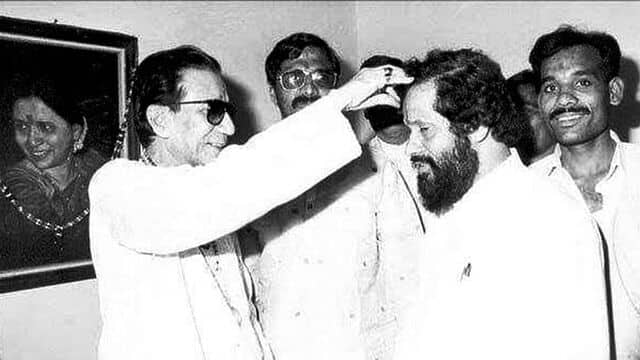 File photo of Shiv Sena founder Bal Thackeray with Anand Dighe. Twitter/@ShivSena[/caption] Anand Dighe is largely credited with expanding the Shiv Sena’s roots in Thane and flanking areas including Kalyan, Dombivli, Ambernath, and Bhiwandi, among others. Like Balasaheb, he never fought elections, but kept a hawk eye on developments around him. More importantly, in Thane, Dighe built a persona emulating Bal Thackeray’s mirror image in Mumbai. Thackeray was known to be available at his residence ‘Matoshree’ to those who needed help. He was the benevolent Godfather. That style was adopted by Dighe in Thane almost like a carbon imprint. [caption id=“attachment_10907851” align=“alignnone” width=“640”] 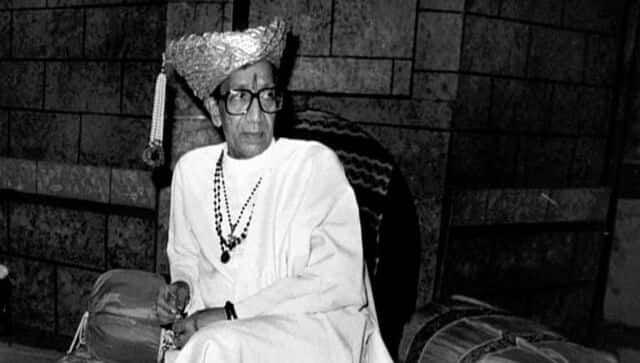 File image of Balasaheb Thackeray. PTI[/caption] Dighe ran a public durbar every evening from his residence in Thane’s Tembi Naka, resolving grievances and settling disputes. He was so successful at this campaign that gradually a mythical aura got built around him. He became the superman who could get anything done. Dighe assiduously built an image of a powerful politician wearing a cloak of mystique. His followers did the rest by elevating his status to an omnipotent being. At his central Thane office, a huge reception hall, would witness many people congregating each evening to metaphorically kiss his hand. [caption id=“attachment_10907901” align=“alignnone” width=“640”] 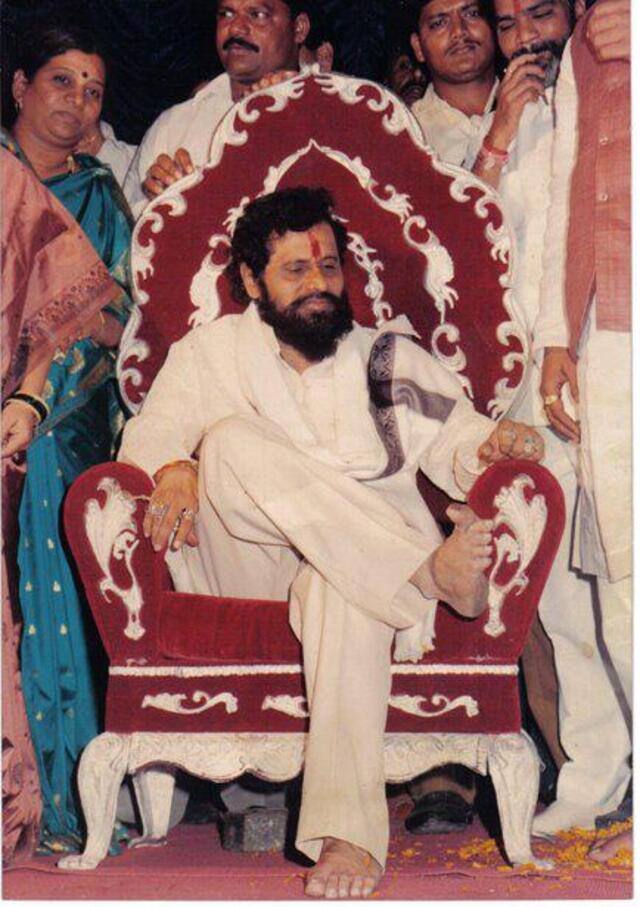 File image of Anand Dighe. Facebook/DharmVeer.AnandSena[/caption] Did this bother Balasaheb? Inputs from Mumbai say yes it did. But he handled it subtly. He knew Dighe wanted to protect his own turf. But that did not deter Balasaheb from stepping in when the situation so demanded. Shiv Sena leader Manohar Joshi, the then chief minister of Maharashtra, overruled the Sena-led Thane Municipal Corporation’s (TMC’s) resolution to oust T Chandrashekhar from the post of municipal commissioner. Anand Dighe and his supporters had taken objection to Chandrashekhar’s demolition drive against illegal construction in Thane. Bal Thackeray intervened. As per available information, he chaired a meeting of Dighe and other prominent Sena leaders from Thane and told them that Chandrashekhar would stay. It showed who the Boss was. Then came the downer. Dighe was accused in the murder of Shiv Sena party member Sridhar Khopkar, who had allegedly cross-voted for Congress in 1989. Dighe was arrested under TADA and was out on bail. The case continued until his death. Dighe was hospitalised in August 2001 after a car accident. He suffered minor injuries on his leg. During his treatment, Dighe died of a heart attack. His followers called it medical negligence. Consequently, they burned down parts of the Sunitadevi Singhania Hospital in Thane where he died. Some believed he was killed due to his popularity. There are many conspiracy theories floating around. Dighe mentored many but his prized pupil was Eknath Shinde. When Eknath Shinde lost two of his children, a son, 11, and a daughter, seven, after a boat capsized in the river during their visit to his village, he was devastated. He wanted to give up everything. Dighe consoled and urged him to take charge of his life.
The biggest lesson was: Learn to internalise your grief.
In Act 2. Eknath Shinde became the disciple to Uddhav Thackeray. It must be said that Uddhav was the first chief minister who gave the urban affairs portfolio to Shinde. He backed him and was even willing to make him CM of the MVA. Both Shinde and Aaditya Thackeray, Uddhav’s son, testify to it. [caption id=“attachment_10907941” align=“alignnone” width=“640”] 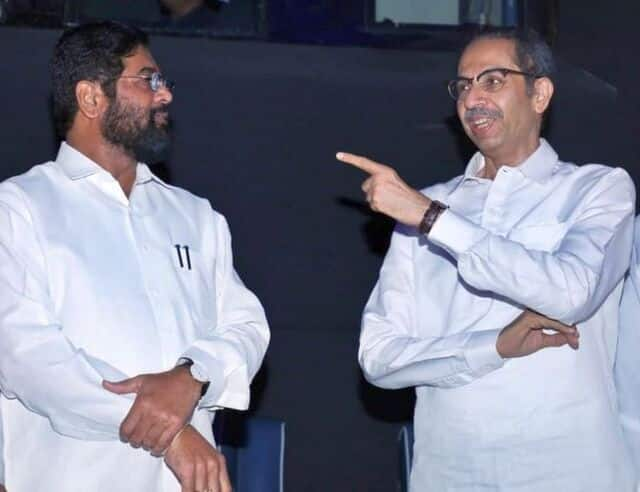 Eknath Shinde with Uddhav Thackeray. Facebook/ eknath.shinde.524[/caption] Things went sour as Shinde felt the Shiv Sena under the MVA had digressed from the Hindutva agenda. Shinde said the MVA could not decide when matters concerning Hindutva, Veer Savarkar, Mumbai blasts and underworld don Dawood Ibrahim came up. Shinde said this as he referred to NCP leader and Minister Nawab Malik (now former) who was arrested by the ED in February in connection with a money-laundering probe linked to Dawood Ibrahim and his aides. Dawood is the main accused in the 1993 bomb blasts in Mumbai that killed more than 257 people. Shinde said Sena MLAs were facing difficulty in carrying out works in their constituencies as allies were trying to empower those who lost to them. While a trusting Uddhav Thackeray (as CM) tried his best to paper over the fissures, it was clearly not enough. Unlike the Guru-Shishya 1.0 this was a doomed act. Shinde obviously felt his main mentor Anand Dighe was closest to him. A biopic “Dharmaveer” based on Dighe’s life, was released in May this year. Shinde pulled out all stops to promote the film. He did it on the premise he was safeguarding Dighe’s ideology and that of Sena founder Bal Thackeray. [caption id=“attachment_10907951” align=“alignnone” width=“640”] 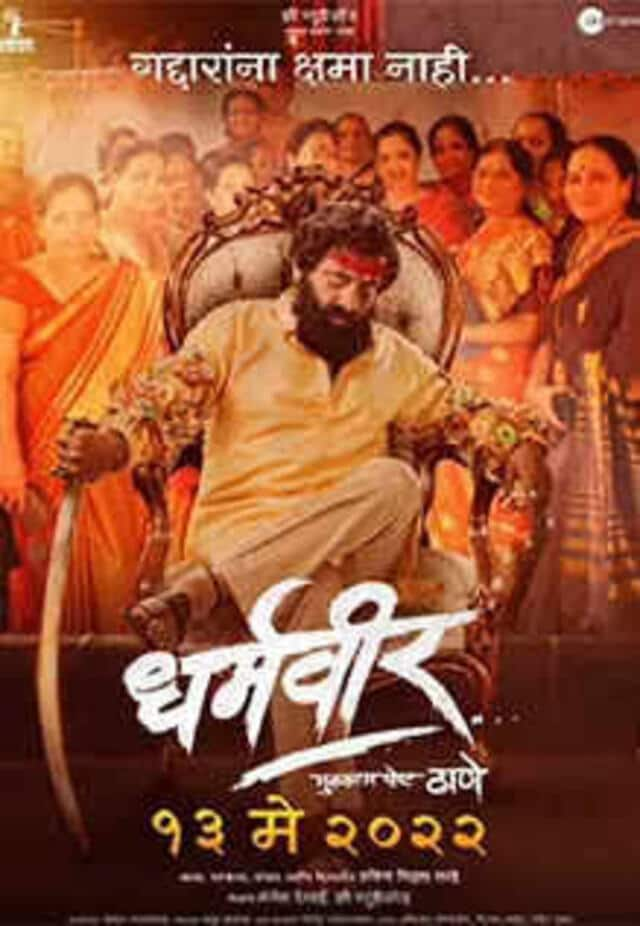 Poster from the biopic Dharmaveer. Imdb[/caption] In hindsight, the biopic seems like an attempt to remind voters in Maharashtra of Dighe’s life and legacy, and how Shinde, his protégé, is a natural successor. It also underlined another fact, almost a replay of Act 1. While Dighe’s stature grew, Balasaheb was never comfortable with it or his methods. In Act 2, Uddhav may have felt the same as Shinde went into top gear. During a special screening of the biopic on Dighe in May, Uddhav walked out before the climax. At the screening were Eknath Shinde and his parliamentarian son, Shrikant Shinde. Uddhav later said he left before the climax, which showed Dighe’s accident and subsequent death, as he found it “disturbing”. Uddhav said his father Bal Thackeray was grief-stricken after Dighe’s death. But here again rumours were rife towards the end of Dighe’s life, that the equation was getting worse between him and the Sena leadership. While Bal Thackeray did not attend Dighe’s funeral, the Sena justified his absence by saying he was asked to stay away due to “security reasons”. Who knows what would have happened if Dighe had lived a full life? Would he have rebelled? Would he have split the Sena? Eknath Shinde, now the new chief minister, has not only adopted Dighe’s style of functioning, but also his look. He has a thick beard, and rings on his fingers. But there is one question left. Was this split a rebellion or treachery? The Shinde camp says they rebelled. Aaditya called it treachery. In the Sarkar movie trilogy, supposedly based on Bal Thackeray, Amitabh Bachchan as “Sarkar” says: “Zaroorat se zyaada wafadaari aur gaddari ke beech…ek bahut maheen lakeer hoti hai.” (There is a very thin line between excessive loyalty and treachery.) The author is CEO of nnis. Views expressed are personal Read all the Latest News , Trending News , Cricket News , Bollywood News , India News and Entertainment News here. Follow us on Facebook, Twitter and Instagram.


)

)
)
)
)
)
)
)
)



